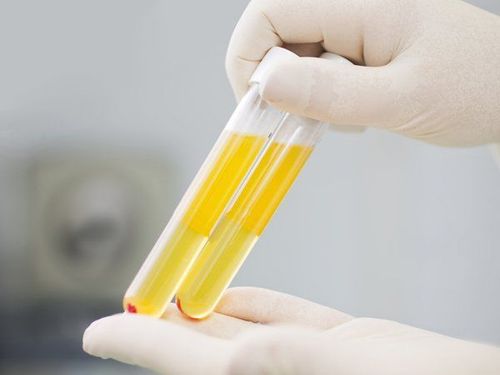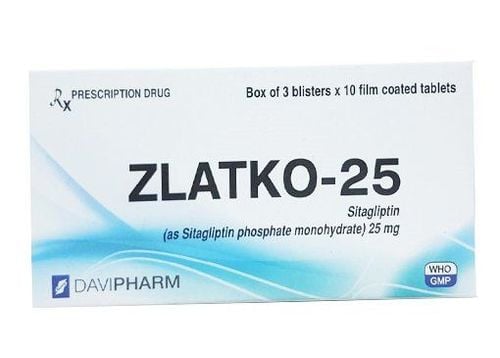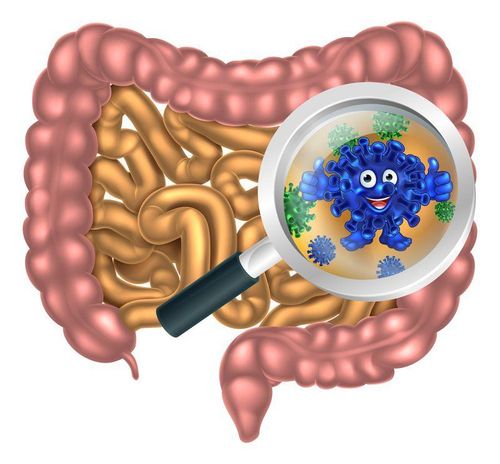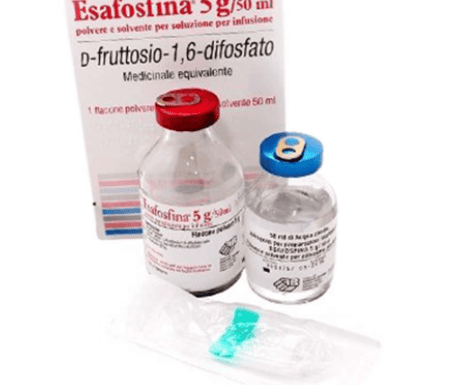This is an automatically translated article.
Ketosis, which may be the initial manifestation of type 1 diabetes, or the result of increased insulin requirements in patients with type 1 diabetes, during infection. When blood glucose is high, glucose will appear in the urine, leading to dehydration and loss of electrolytes such as sodium and potassium.1. What is ketoacidosis?
What is ketone? Ketones are a form of acid that is created when the body begins to use fat instead of carbohydrates for energy. When there isn't enough insulin to get sugar from the blood into the cells, the body turns to fat for energy. When fat is broken down, ketones are produced and can accumulate in the body. High levels of ketones are poisoning of the body. This condition is called acid ketosis.Diabetic ketoacidosis may be the initial manifestation of type 1 diabetes or the result of increased insulin requirements in patients with type 1 diabetes during infection, trauma, or infarction cardiomyopathy or surgery. This is a life-threatening emergency with a mortality rate of less than 5%.
Patients with type 2 diabetes can develop ketoacidosis under severe stress conditions such as pyogenic infections. Recently, diabetic ketoacidosis has been one of the most frequent serious complications of insulin pump therapy, occurring in approximately one in 80 patients during one month of treatment.
Many patients with regular capillary blood glucose monitoring ignore the measurement of urinary ketones. This could be a sign of possible insulin loss or pump failure before the disease gets worse. Poor compliance is one of the common causes of diabetic ketoacidosis, especially when these attacks recur.
2. Symptoms and signs of ketoacidosis

Trước khi xuất hiện tình trạng hôn mê, người bệnh sẽ gặp tình trạng rối loạn tiêu hóa kèm theo mệt mỏi rõ rệt
Hypotension with tachycardia indicates severe dehydration and electrolytes, often with hypothermia. There may be abdominal pain and even increased sensitivity in the absence of abdominal disease. In contrast, cholecystitis and pancreatitis can occur with very few symptoms and signs.
2.2. Subclinical symptoms Plasma potassium concentration is increased although total body potassium is decreased due to persistent polyuria and vomiting. Amylase is usually elevated but is usually salivary amylase as well as pancreatic amylase. Therefore, in this setting, serum amylase is not a clear sign of acute pancreatitis.
Blood nitrogen may be a better indicator of renal status than serum creatinine (SMA - 6) whose results are elevated by nonspecific chromatography of ketoacids and glucose.
Leukocytosis up to 25000/μl with leftward shift may or may not be related to infection. An increase in temperature or a normal temperature indicates an infection because patients with diabetic ketoacidosis often have a low temperature if no infection is present.
3. Complications
The main metabolic disturbances in patients with diabetic ketoacidosis are ketoacidosis and hyperglycemia. Both are caused by a lack of insulin associated with hyperglycemia.3.1. Hyperglycemia Hyperglycemia due to increased hepatic glucose production as well as decreased glucose utilization in peripheral tissues Increased hepatic glucose release is a consequence of increased glucose production, a result of decreased insulin as well as associated associated with increased blood glucagon.
When the serum mosmol/L concentration rises above 320 - 330 mosm/L, the central nervous system is inhibited and coma may occur. Coma in diabetic patients with lower osmolality should be investigated for causes of coma other than hyperosmolarity.
3.2. Ketoacidosis Blood ketoacidosis represents the result of insulin deficiency at sites of multiple enzymes. Insulin deficiency is associated with increased levels of growth hormone and glucagon leading to increased lipolysis from adipose tissue and increased hepatic ketosis.
Acetic acid and its metabolite, acetone, were measured with nitroprusside reactants. However, the sensitivity to acetone is poor, requiring more than 10 mmol. This concentration is rarely reached in the plasma of subjects with ketoacidosis, although detectable concentrations have been obtained in the urine. Therefore, only acetoacetate is present in the plasma of patients with ketoacidosis.
4. Diabetic ketoacidosis diagnosis
Diagnosis of diabetic ketoacidosis is based on the following factors:Hyperglycemia > 250 mg/dl. Acidosis with blood pH < 7.3. Serum bicarbonate < 15 mEq/l. Ketone positive in serum.
5. Treatment of diabetic ketoacidosis

Người bệnh sẽ được xét nghiệm Glucose máu (tại giường) 1 giờ/1 lần
In fact, the degree of hyperglycaemia, acidosis, dehydration and electrolyte disturbances, depends on the extent to which glucose is produced. Other factors such as nutritional status, duration of acidosis - ketosis; The degree of insulin deficiency, the drugs used, etc., all affect the status and prognosis of the disease.
Clinical monitoring of Consciousness status once every hour. Vitals (temperature, pulse, blood pressure, respiratory rate) every hour. Hourly urine output for the first few hours, then 24-hour urine output. Weight (if possible). Electrocardiogram monitoring. Subclinical monitoring Blood glucose test (at bed) every 1 hour. Blood potassium, pH 1-2 hours/time. Na+, Cl-, Bicarbonate every 2-4 hours. Control the index of phosphate, magnesium every 4-6 hours, urea or blood creatinine every 4-6 hours. Blood ketones every 2 hours. Ketonuria: 2-4 hours. Blood calcium: as prescribed by the doctor. Hematocrit: as prescribed by the doctor. Follow-up treatment Amount of fluid in and out every 1-2 hours. Once the condition is stable, monitor every 4 hours. Amount of insulin infusion (unit/hour) 1 - 4 hours/time. Potassium (mmol/l) 1 - 4 hours/time. Plasma glucose (mmol/l) every 1-2 hours, when condition improves every 4 hours. If this is not possible, capillary blood glucose can be tested. Bicarbonate and phosphate every 1 - 4 hours.
6. Prevention

Người bệnh tiểu đường cần nhận biết các triệu chứng và dấu hiệu sớm của nhiễm toan ceton để có thể đi kiểm tra kịp thời
Ketonuria should be measured in patients with signs of infection or in patients on insulin pump therapy when the level of venous blood glucose is sudden and persistent. In the presence of severe ketonuria and persistent glucoseuria on multiple tests, regular supplementation of insulin and liquid foods such as tomato juice and low-salt meat broth is necessary to restore fluids and electrolytes.
Patients should be instructed to contact their physician if persistent ketonuria occurs, and particularly if vomiting occurs, or if appropriate adjustment of infusion rate by insulin pump fails to correct hyperglycemia. blood and ketonuria. If diabetes is juvenile-onset, especially in adolescence, attacks of severe ketoacidosis often indicate poor adherence to the insulin regimen and these patients will require further supervision. of the family.
Vinmec International General Hospital is one of the hospitals that not only ensures professional quality with a team of leading medical doctors, modern equipment and technology, but also stands out for its examination and consultation services. comprehensive and professional medical consultation and treatment; civilized, polite, safe and sterile medical examination and treatment space. Customers when choosing to perform tests here can be completely assured of the accuracy of test results.
Please dial HOTLINE for more information or register for an appointment HERE. Download MyVinmec app to make appointments faster and to manage your bookings easily.













